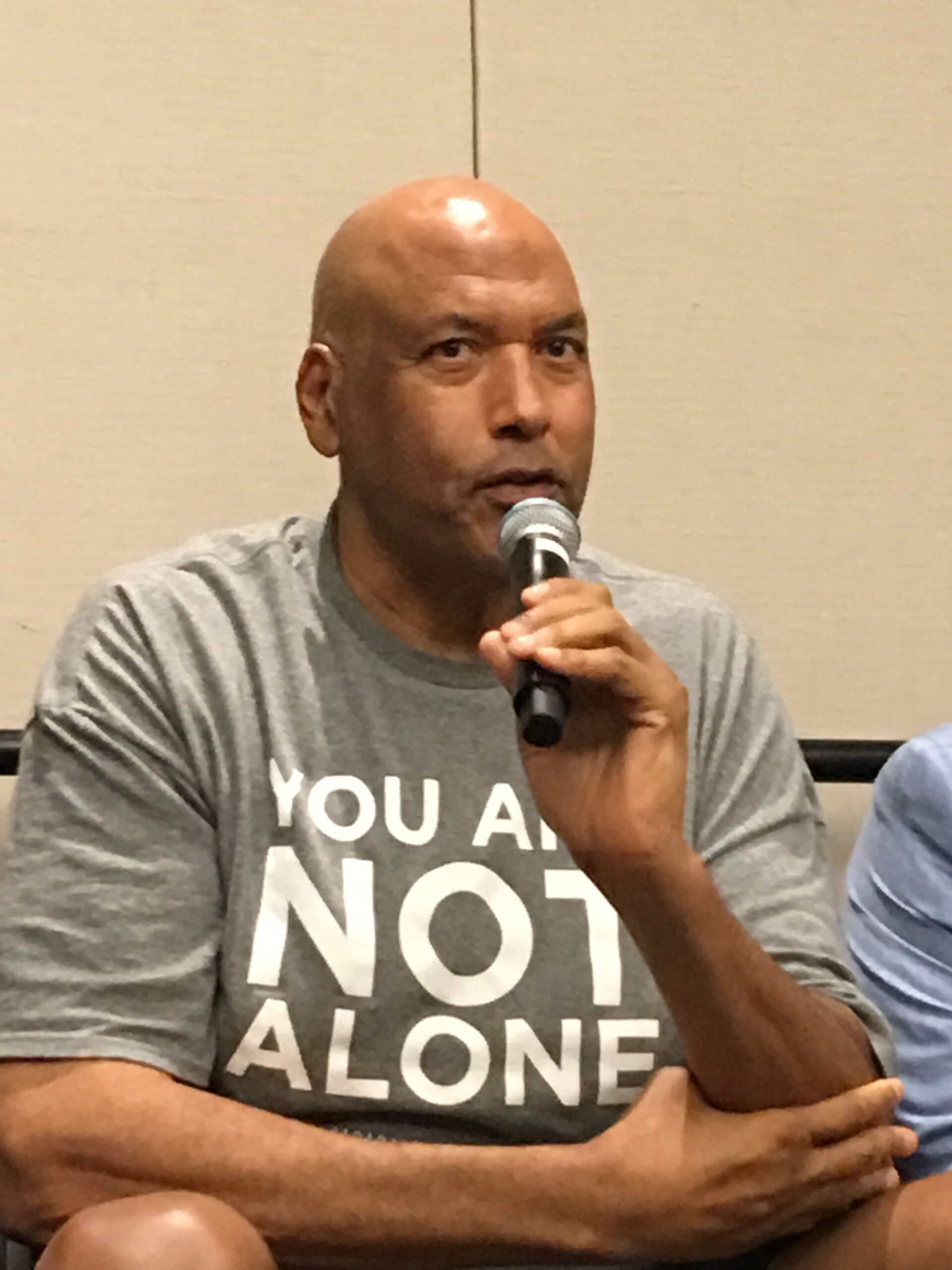

Kids who seem oppositional are often severely anxious
Writer: Caroline Miller
Clinical Experts: Jerry Bubrick, PhD , Rachel Busman, PsyD, ABPP , Nancy Rappaport, MD
What You'll Learn
- Why do kids with anxiety sometimes act out?
- What are the signs that a disruptive child might be anxious?
- What happens when anxiety is mistaken for bad behavior?
- What kinds of help are available for anxious kids who act out?
- Quick Read
- Full Article
- Unrecognized anxiety
- A great masquerader
- Problems at school
- Giving kids tools to handle anxiety
- Anxiety confused with ADHD
- How to identify anxiety
The symptoms of anxiety that most of us think of are clinging to parents, avoiding things or being very shy. But problem behavior can also be a symptom of anxiety. That’s because some anxious children feel an overwhelming need to get out of the situation that’s making them uncomfortable. That behavior may look like anger or defiance.
Signs that a child who is acting out might be anxious include lashing out, throwing tantrums, seeming distracted, moving around a lot (like leaving their seat or even running out of the room), arguing with others, and asking lots of questions.
Adults may mistakenly think that children who are acting out are being difficult on purpose. Parents don’t feel respected and may be frustrated or exhausted. At school, when kids disrupt class or don’t follow instructions, they offend teachers. Instead of learning to manage their anxiety, they end up in the principal’s office.
Anxious kids who act out may be mistakenly diagnosed with ADHD or a behavior disorder. That’s why it’s important to have a careful evaluation by a mental health professional, like a psychologist, psychiatrist or social worker, to find out what’s causing the behavior. Anxiety can be treated very successfully with cognitive behavior therapy, or CBT. Kids learn techniques to calm themselves down when they are anxious, and the anxiety fades over time. Medication is sometimes recommended, too.
A10-year-old boy named James has an outburst in school. Upset by something a classmate says to him, he pushes the other boy, and a shoving-match ensues. When the teacher steps in to break it up, James goes ballistic, throwing papers and books around the classroom and bolting out of the room. He is finally contained in the vice principal’s office, where staff members try to calm him down. Instead, he kicks the vice principal in a frenzied effort to escape. The staff calls 911, and James ends up in the Emergency Room.
To the uninitiated, James looks like a boy with serious anger issues. It’s not the first time he’s flown out of control. The school insists that his parents pick him up and take him home for lunch every day because he’s been banned from the cafeteria.
Unrecognized anxiety
But what’s really going on? “It turns out, after an evaluation, that he is off the charts for social anxiety,” reports Jerry Bubrick, PhD, a former child psychologist at the Child Mind Institute. “He can’t tolerate any — even constructive — criticism. James is terrified of being embarrassed, so when a boy says something that makes him uncomfortable, he has no skills to deal with it, and he freaks out. Flight or fight.”
James’s story illustrates something that parents and teachers may not realize — that disruptive behavior is often generated by unrecognized anxiety. A child who appears to be oppositional or aggressive may be reacting to anxiety—anxiety they may, depending on their age, not be able to articulate effectively, or not even fully recognize.
“Especially in younger kids with anxiety you might see freezing and clinging kind of behavior,” says Rachel Busman, PsyD, a clinical psychologist, “but you can also see tantrums and complete meltdowns.”
A great masquerader
Anxiety manifests in a surprising variety of ways in part because it is based on a physiological response to a threat in the environment, a response that maximizes the body’s ability to either face danger or escape danger. So while some children exhibit anxiety by shrinking from situations or objects that trigger fears, some react with overwhelming need to break out of an uncomfortable situation. That behavior, which can be unmanageable, is often misread as anger or opposition.
“Anxiety is one of those diagnoses that is a great masquerader,” explains Laura Prager, MD, director of the Child Psychiatry Emergency Service at Massachusetts General Hospital. “It can look like a lot of things. Particularly with kids who may not have words to express their feelings, or because no one is listening to them, they might manifest their anxiety with behavioral dysregulation.”
The more commonly recognized symptoms of anxiety in a child are things like trouble sleeping in their own room or separating from their parents, avoidance of certain activities. “Anyone would recognize those symptoms,” notes Dr. Prager, co-author of Suicide by Security Blanket, and Other Stories from the Child Psychiatry Emergency Service. But in other cases the anxiety can be hidden.
“When the chief complaint is temper tantrums, or disruption in school, or throwing themselves on the floor while shopping at the mall, it’s hard to know what it means,” she explains. “But it’s not uncommon, when kids like that come in to the ER, for the diagnosis to end up being a pretty profound anxiety disorder.”
Problems at school
It’s not uncommon for children with serious undiagnosed anxiety to be disruptive at school, where demands and expectations put pressure on them that they can’t handle. And it can be very confusing to teachers and other staff members to “read” that behavior, which can seem to come out of nowhere.
Nancy Rappaport, MD, a Harvard Medical School professor who specializes in mental health care in school settings, sees anxiety as one of the causes of disruptive behavior that makes classroom teaching so challenging. “The trouble is that when kids who are anxious become disruptive they push away the very adults who they need to help them feel secure,” notes Dr. Rappaport. “And instead of learning to manage their anxiety, they end up spending half the day in the principal’s office.”
Dr. Rappaport sees a lot of acting out in school as the result of trauma at home. “Kids who are struggling, not feeling safe at home,” she notes, “can act like terrorists at school, with fairly intimidating kinds of behavior.” Most at risk, she says, are kids with ADHD who’ve also experienced trauma. “They’re hyper-vigilant, they have no executive functioning, they misread cues and go into combat.”
Giving kids tools to handle anxiety
When a teacher is able to build a relationship with a child, to find out what’s really going on with them, what’s provoking the behavior, she can often give them tools to handle anxiety and prevent meltdowns. In her book, The Behavior Code: A Practical Guide to Understanding and Teaching the Most Challenging Students, Dr. Rappaport offers strategies kids can be taught to use to calm themselves down, from breathing exercises to techniques for distracting themselves.
“When a teacher understands the anxiety underlying the opposition, rather than making the assumption that the child is actively trying to make her miserable, it changes her approach,” says Dr. Rappaport, “The teacher is able to join forces with the child himself and the school counselor, to come up with strategies for preventing these situations.”
If it sounds labor-intensive for the teacher, it is, she notes, but so is dealing with the aftermath of the same child having a meltdown.
Anxiety confused with ADHD
Anxiety also drives a lot of symptoms in a school setting that are easily misconstrued as ADHD or defiant behavior.
“I’ll see a child who’s having difficulty in school: not paying attention, getting up out of their seat all the time, asking a lot of questions, going to the bathroom a lot, getting in other kids’ spaces,” explains Dr. Busman. “The behavior is disrupting other kids, and is frustrating to the teacher, who’s wondering why they ask so many questions, and why they’re so wrapped up in what other kids are doing, whether they’re following the rules.”
People tend to assume what’s happening with this child is ADHD inattentive type, but it’s commonly anxiety. Kids with OCD, mislabeled as inattentive, are actually not asking all those questions because they’re not listening, but rather because they need a lot of reassurance.
How to identify anxiety
“It probably occurs more than we think, either anxiety that looks disruptive or anxiety coexisting with disruptive behaviors,” Dr. Busman adds. “It all goes back to the fact that kids are complicated and symptoms can overlap diagnostic categories, which is why we need to have really comprehensive and good diagnostic assessment.”
First of all, good assessment needs to gather data from multiple sources, not just parents. “We want to talk to teachers and other people involved with the kid’s life,” she adds, “because sometimes kids that we see are exactly the same at home and at school, sometimes they are like two different children.”
And it needs to use rating scales on a full spectrum of behaviors, not just the area that looks the most obvious, to avoid missing things.
Dr. Busman also notes that a child with severe anxiety who’s struggling in school might also have attention or learning issues, but they might need to be treated for the anxiety before they can really be evaluated for those. She uses the example of a teenager with OCD who is doing terribly in school. “She’s ritualizing three to four hours a day, and having constant intrusive thoughts — so we need to treat that, to get the anxiety under control before we ask, how is she learning?”
#James Donaldson notes:Welcome to the “next chapter” of my life… being a voice and an advocate for #mentalhealthawarenessandsuicideprevention, especially pertaining to our younger generation of students and student-athletes.Getting men to speak up and reach out for help and assistance is one of my passions. Us men need to not suffer in silence or drown our sorrows in alcohol, hang out at bars and strip joints, or get involved with drug use.Having gone through a recent bout of #depression and #suicidalthoughts myself, I realize now, that I can make a huge difference in the lives of so many by sharing my story, and by sharing various resources I come across as I work in this space. #http://bit.ly/JamesMentalHealthArticleFind out more about the work I do on my 501c3 non-profit foundationwebsite www.yourgiftoflife.org Order your copy of James Donaldson's latest book,#CelebratingYourGiftofLife: From The Verge of Suicide to a Life of Purpose and Joy
www.celebratingyourgiftoflife.com
Link for 40 Habits Signupbit.ly/40HabitsofMentalHealth
If you'd like to follow and receive my daily blog in to your inbox, just click on it with Follow It. Here's the link https://follow.it/james-donaldson-s-standing-above-the-crowd-s-blog-a-view-from-above-on-things-that-make-the-world-go-round?action=followPub
Frequently Asked Questions
Can acting out be a symptom of anxiety in a child?
Acting out can be a symptom of anxiety in a child because some anxious children feel an overwhelming need to get out of a situation that’s making them anxious. Their behavior may look like anger or defiance, lashing out, throwing tantrums, seeming distracted, moving around a lot, or arguing with others. Are anxious kids misdiagnosed because they act out?
https://standingabovethecrowd.com/james-donaldson-on-mental-health-how-anxiety-leads-to-problem-behavior/



 https://standingabovethecrowd.com/james-donaldson-on-mental-health-cognitive-distortions-understanding-and-challenging-negative-thoughts/
https://standingabovethecrowd.com/james-donaldson-on-mental-health-cognitive-distortions-understanding-and-challenging-negative-thoughts/













